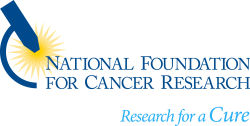ROCKVILLE, MD – Researchers from Wake Forest Baptist Medical Center and Tianjin Medical University Cancer Institute and Hospital (TMUCIH) have discovered that gastric cancer tissue samples bearing mutation of a specific gene, MUC16, too are associated with higher tumor mutation loads. Also known as tumor mutation burdens, measurement of high genetic mutation rates among cancerous versus healthy tissue has increasingly been shown to correlate with effective response rates to immunotherapy. The knowledge could bode positively for patients with the biomarker present.
The findings were published in the newest online edition of JAMA Oncology, based on an analysis of 437 gastric cancer tissue samples from the National Institutes of Health’s Cancer Genome Atlas in the United States and 256 gastric cancer tissue samples from an Asian cohort comprised of multiple sources, including particularly TMUCIH’s Tissue Banking Facility (TBF) in China. In the study, the U.S. cohort was used as a discovery set and the Asian cohort offered validation. In both, gastric cancer samples with MUC16 mutations exhibited significantly greater tumor mutation burdens than those without MUC16 mutations. The mutation was present in 38.4% of the discovery set and 22.3% of the validation set.
“Tumors with higher tumor mutation loads tend to be more responsive to immunotherapy,” said Wake Forest’s Wei Zhang, Ph.D., the article’s lead author and a fellow of the National Foundation for Cancer Research (NFCR).
He and his co-authors stress the implications that this and other proven biomarkers have on the ability of oncologists to design cancer treatments most likely to succeed. Their findings, for example, could serve to open immunotherapy options for up to 38% of gastric cancer patients.
In addition to having supported Dr. Zhang’s efforts, NFCR too is associated with the study by nature of the TBF-derived tissues and data, which comprised sizable portions of the Asian cohort’s total makeup. Originally known as the Joint Tissue Banking Facility, NFCR and TMUCIH in 2006 together launched what, until at least as late as 2012, had been the largest tissue bank in China. There, they collected and stored cancer tissues with annotated clinical information, as well as conducted research on gastric cancer, currently the world’s fifth most common cancer and its third leading cause of cancer death.
Categories: MEMBER NEWS

